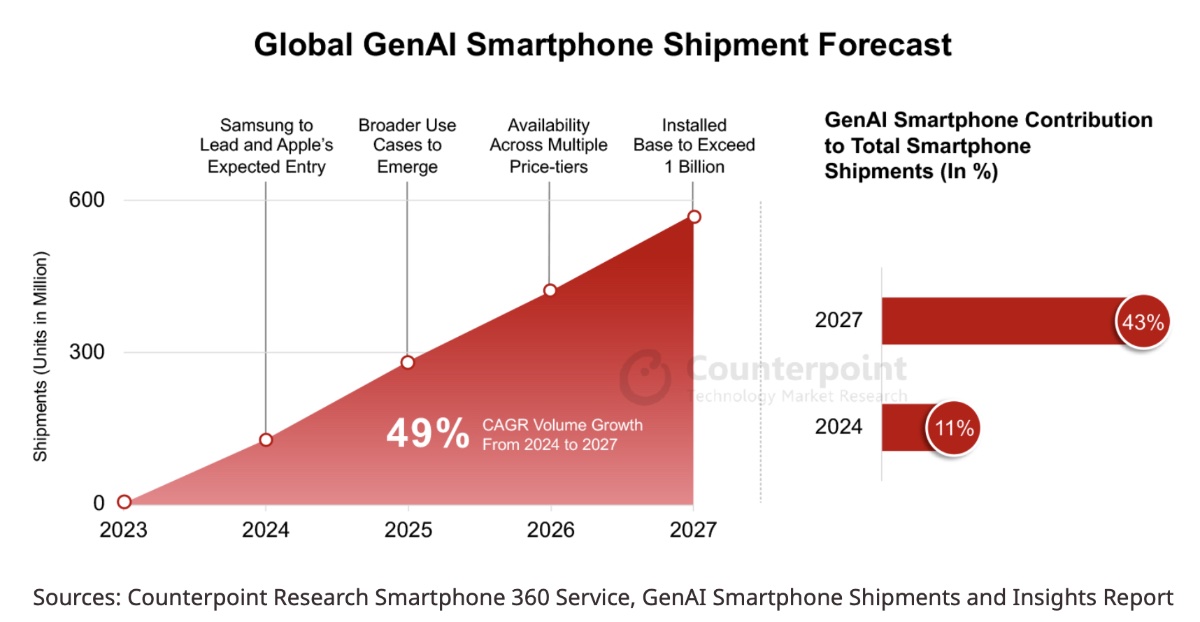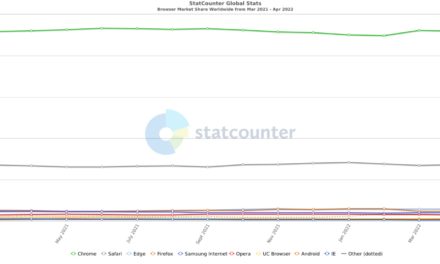The GenAI smartphone share of overall smartphone shipments will reach 11% by 2024 and 43% by 2027 to pass 550 million units in 2027 with 4X growth, according to an upcoming report, “GenAI Smartphone Shipments and Insights,” from Counterpoint Research’s Smartphone 360 Service.
The research groups expects the GenAI smartphone installed base to cross one billion by 2027. Against the backdrop of Apple’s anticipated entry into the segment later this year, these estimates are higher than Counterpoint’s earlier forecast of December 2023, according to the research group.
Counterpoint Research defines the GenAI smartphone as a mobile device that leverages large-scale, pre-trained generative AI models to create original content or perform contextually-aware tasks. The research group expect ssuch devices to have multimodal capabilities, allowing them to process text, image, voice and other inputs to generate a variety of output and enable a user experience that is fluid and seamless.
Counterpoint also expect the hardware specifications of such devices will likely evolve as the technology advances. However, at present, a device should have hardware capabilities that are comparable to or exceed the performance of current flagship smartphones to effectively run generative AI models, the research group adds.
“Apart from Samsung, Apple’s anticipated entry in the space will further help the segment’s growth. Once Apple enters, we expect AI to immediately become a must-have feature in all mid-to-premium smartphone launches starting 2025,” says Counterpoint Research Director Tarun Pathak. “However, the real differentiation will lie in the use cases as consumers are still evaluating potential impact of AI in their future devices.”
Going forward, Counterpoint expect sGenAI smartphones to hit an inflection point in 2025 as the devices permeate the broader price segments, especially the US$400-$599 price tier. The ≥$600 and $400-$599 price bands will account for 9 out of every 10 GenAI smartphones sold in 2024, adds the research group.
Article provided with permission from AppleWorld.Today





